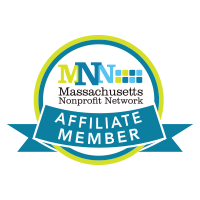Navigating Yahoo and Google's New Email Authentication Requirements
As of February 1, 2024, Yahoo and Google put in place stricter authentication requirements to lessen spam and phishing. The end goal for email users is that their inboxes will have more legitimate emails and fewer emails that put people at security risk.
These authentication requirements primarily target “bulk email senders” which is anyone who sends over 5,000 emails daily to Gmail and Yahoo accounts. This likely isn’t the case for many small or medium-sized institutions, but we recommend that all email senders meet these requirements as new best practices moving forward.
While these requirements involve a lot of acronyms that can be a bit confusing, there is no need to stress! We put together a detailed breakdown with tips and resources on how to navigate this new requirement.
The requirements are:
- Enhanced Email Authentication:
- SPF (Sender Policy Framework): Verifies your domain authorizes the emails sent.
- DKIM (DomainKeys Identified Mail): Digitally signs emails to prevent alteration.
- DMARC (Domain-based Message Authentication, Reporting & Conformance): Sets policies for handling unauthenticated emails (e.g., reject, quarantine).
- Easy Unsubscribe: Ensure your emails have a clear and readily accessible one-click unsubscribe button within each email. Most email marketing providers already have this per CAN-SPAM laws.
- Low Spam Complaint Rate: You should maintain a spam complaint rate below 0.3% for Gmail and Yahoo.
How to meet these requirements:
Set up necessary authentications: You can implement these protocols by working with your email provider and website domain host to set up SPF, DKIM, and DMARC. Email marketing platforms and domain hosts are offering ample resources and support as millions of people make these changes.
Here are some links for the most common email marketing platforms:
- ConvertKit:Verify your domain to optimize your deliverability
- Mailchimp: About Email Domain Authentication | Set Up Email Domain Authentication
- Constant Contact: Self-authenticate your emails using your own domain
- ActiveCampaign: A Guide to Google and Yahoo Authentication Changes in 2024
- MailerLite: The basics of DMARC
Include an unsubscribe link: Most email providers already have this as a requirement per CAN-SPAM laws. Double-check that you have a prominent and easily accessible unsubscribe link in every email and you’re good to go.
Keep an eye on your spam complaint rate: You can track your spam complaint rates within your email marketing platform’s analytics and through Google Postmaster Tools.
Here are some additional resources:
While these requirements went into effect on February 1, you’re not too late, but you should implement these changes as soon as possible. Even if you don’t send 5,000 emails a day, proactively adopting these practices will make sure that your emails reach your intended recipients and you’ll maintain a good sender reputation.
And hey, we’re looking forward to less spam in our future too!
Connect with us to get support on your email security requirements
Are you ready to strengthen your email security and compliance measures? Whether you’re navigating the complexities of DMARC, SPF, or other email authentication protocols, we’re here to provide the support you need. Reach out to us today to take the next step in safeguarding your email communications. Contact us.

